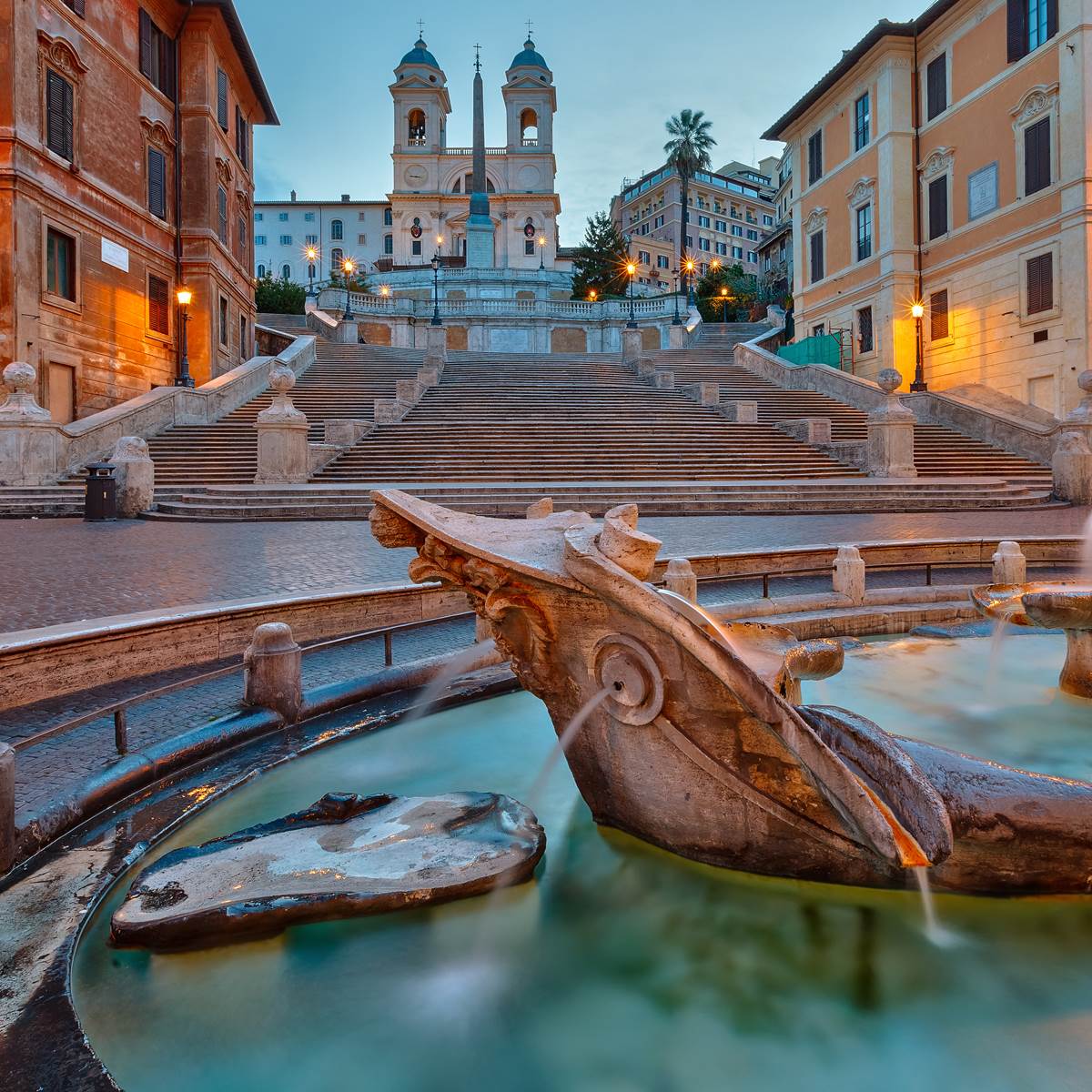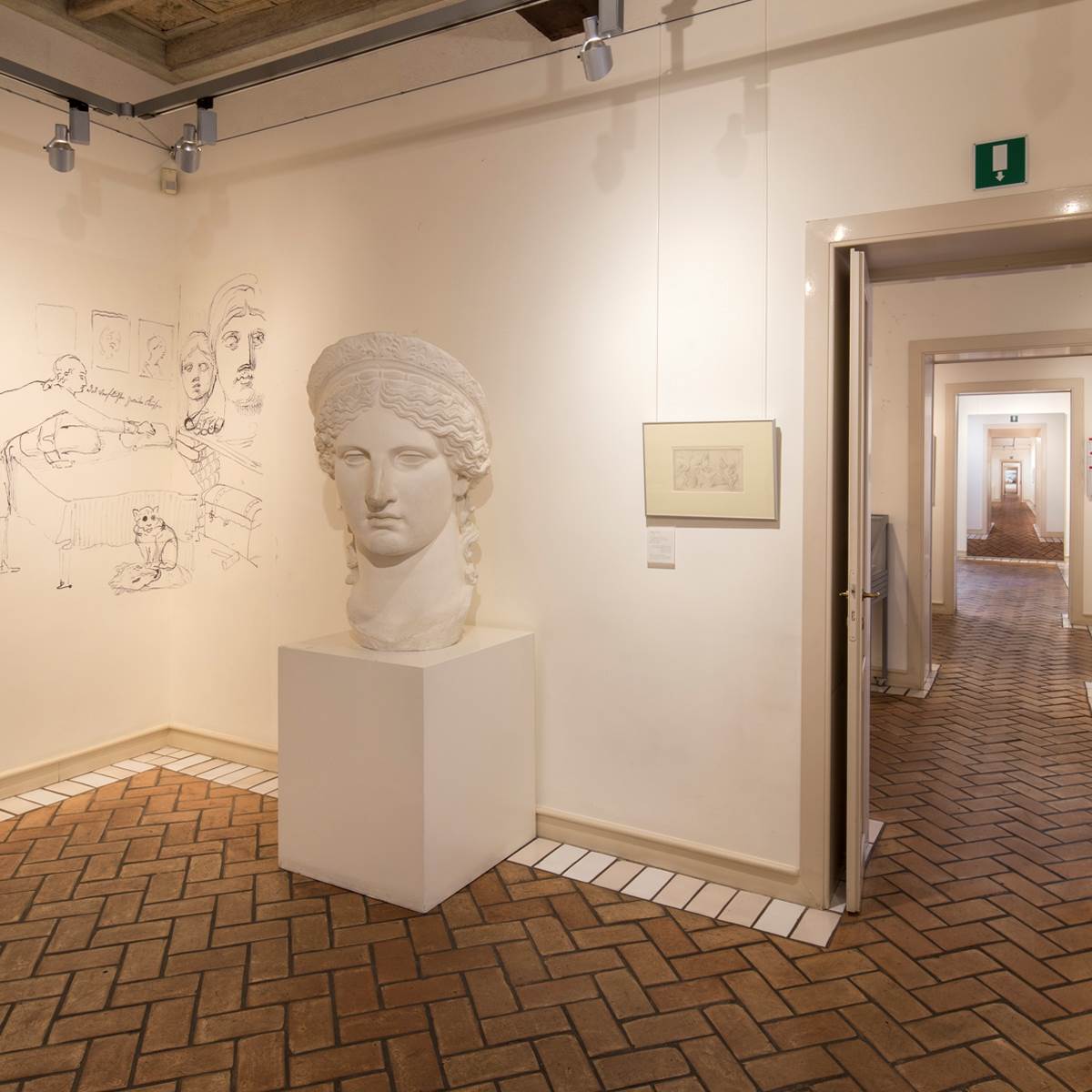The best house museums in Rome
A Roman itinerary in the midst of art in the house museums of Giorgio De Chirico, Keats-Shelley, Goethe, Hendrik Andersen, and Giacomo Balla,
What do Giorgio De Chirico, Giacomo Balla, Goethe, Keats, Shelley, and Hendrik Andersen have in common? Besides, of course, being members of the who’s who of art and literature – but that would be too easy. No, the answer is Rome, where they all lived for a while in a house with friends, like Goethe, or in one they bought, like Balla, that later became a museum. Furthermore, De Chirico said that his house in Rome was located ‘in the centre of the centre of the world’. Which, Rome aside, would be a little like saying that one’s own home is the pulsing heart of one’s own world. In effect, a house is an account of the personality and story of whoever lived in it, the legacy of his private life, of his little personal rites, his tastes, but also of the culture and the time when he lived. It is the very furnishings, books, memories, everyday objects that reveal the life of the resident to whom they belonged. So we can tell if we’re dealing with an artist or a writer such as Giorgio De Chirico, Giacomo Balla, Goethe, Keats, Shelley, or Hendrik Christian Andersen. There are so many things to learn. So, let’s go on a tour of the most beautiful house museums of the Eternal City.

House Museum of Giorgio De Chirico
Attracted like a magnet by the splendid Piazza di Spagna, with the stairway of Trinità dei Monti, let’s begin here, specifically at number 31. ‘In the centre of the centre of the world’, on the top floor of the seventeenth-century Palazzo dei Borgognoni, where Giorgio De Chirico lived with his second wife, Isabella Pakzswer Far, from 1948 to 1978, the year he died. We all know this metaphysical painter for his alienating canvases of sun-drenched piazzas, deserted or at most populated by enigmatic mannequins. But the house museum offers much more, with a magnificent collection of works, from paintings to sculptures that, from the late 1920s to the mid-1970s, takes us on a remarkable journey through his art, leaving us hypnotised. Among other works, marvelous replicas of great masters and many self-portraits and portraits of his wife, Isa, stand out. In the dining room one finds the still lifes, while gilded sculptures recount Homeric legends. And on the top floor are the artist’s studio and a priceless library.
Keats-Shelley House
A few steps away, at number 26, we find the Keats-Shelley House, an eighteenth-century building where the English poet John Keats died of tuberculosis at only 25 years of age in February of 1821. His rooms, lined with bookshelves and practically unchanged since 1909 when they became a museum, evoke the challenging lives of Keats and his roommate, the painter Joseph Severn (1793-1879). Keats had come to Rome in 1820, hoping that the mild climate would improve his health and had rented two rooms on the fourth floor.
In 1906, the house was acquired by the Keats-Shelley Memorial Association, a group of British, American, and Italian lovers of Romantic poetry. The library specialises in the lives of Keats, Shelley, and other great poets influenced by Keats, such as Byron, Wordsworth, Oscar Wilde, Walt Whitman, Elizabeth Barrett Browning, and Jorge Luis Borges. Faded letters, manuscripts, and other mementos fill the room where Severn slept. Keats’s bedroom includes relics, death masks, portraits of Keats by Severn, letters written by Severn cursing the ‘brutal’ Italian authorities, and a nineteenth-century walnut boat bed: the original was burned together with the entire contents of the room to prevent the spread of tuberculosis. At the end of the visit, a large terrace on the second floor and another on the third offer a broad view of Piazza di Spagna, perfect for a series of photographs.

Goethe’s House
Walking toward Piazza del Popolo, we find Goethe’s house at 18 Via del Corso. Earlier, it had been a meeting place for intellectuals and artists, and when the most famous writer in the German language, Johann Wolfgang von Goethe ‘finally arrived in this capital of the world’, he dwelled there, the guest of his painter friend Johann Heinrich Wilhelm Tischbein. Despite his complaints about his noisy neighbours, he had a happy stay there, from 1786 to 1788. Today it is a small, lovingly curated museum, housing etchings of eighteenth-century Rome by Piranesi as well as sketches and letters by Goethe, along with some charming drawings by Tischbein in which Goethe appears relaxed and serene, offering us a vivid snapshot of his life in Rome. With prior authorisation, devoted fans can visit the bookshop, with 8500 volumes, including rare and first editions.
Hendrik Andersen House Museum
After growing up in the United States, the Norwegian sculptor and intellectual Hendrik Andersen chose Rome as his home, near the Tiber, barely outside the Porta del Popolo, on the Flaminian Way. Here, based on his own plans, he had the eclectic Villa Hélène built, a highly original ‘villa with an adjoining sculpture studio’ in Neo-Renaissance style embellished with symbols linked to his complicated love life. Entering the house almost provokes a feeling of unreality. And there is indeed the unreal pallor of a forest of white statues, mostly in gesso but some also painted, and graphic works that tell of a life spent in search of a dream so utopian that it could be transformed into reality only with great difficulty: a perfect ‘World City’ where peace would reign. The two large rooms on the ground floor that house the collection were the artist’s studio and gallery. One can venture to say that a visit to this museum leaves one without cares, like Art Nouveau itself: abandoning oneself to the pure pleasure of experiencing beauty for beauty’s sake. Andersen lived here until his death in 1940, and today his home houses the museum.
Casa Balla
The newest of the house museums is in the Prati neighbourhood. It is Casa Balla, the Futurist home where Giacomo Balla worked starting in 1929. From the outside, the orange villa on Via Oslavia looks like all the others in the Vittoria neighbourhood. The inside, however, hides one of the best kept secrets in Rome. When Giacomo Balla, his wife Elisa, and their daughters Luce and Elica moved into the apartment, they decided to make it into a complete work of art, a universe in which Balla and the girls could express themselves in total freedom in a magical place of metamorphoses. Thus, the very walls became canvases on which to experiment with shapes and colours, the furniture was designed to straddle art and design, the kitchen utensils were enlivened by original forms, and the rooms were populated with objects that he designed and decorated as a complete kaleidoscopic project.
in partnership with![]()
USEFUL INFO
Distance from central Rome to Castel Romano Designer Outlet: about 25 km; driving time approximately 45 minutes
Casa Museo di Giorgio De Chirico
Piazza di Spagna 31, tel. 066796546,
www.fondazionedechirico.org/casa-museo/
Keats-Shelley House
Piazza di Spagna 26, tel. 066784235,
Casa di Goethe
Via del Corso 18, tel. 0632650412,
Casa Museo Hendrik Andersen
Via Pasquale Stanislao Mancini 20, tel. 063219089,
www.direzionemuseistataliroma.beniculturali.it/istituti/museo-hendrik-christian-andersen
Casa Balla
Via Oslavia 39 B, maxxi.archeoares.it/mostre/casa-balla

Eat & Stay
Extending your trip to Rome and needing somewhere to stay? Here are some of our favourite places you might wish to consider…in order to make your vacation even more special and unforgettable.
Plan Your Visit
To Castel Romano


